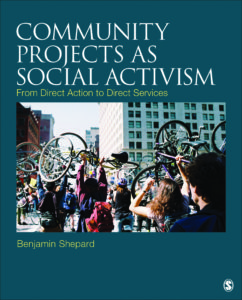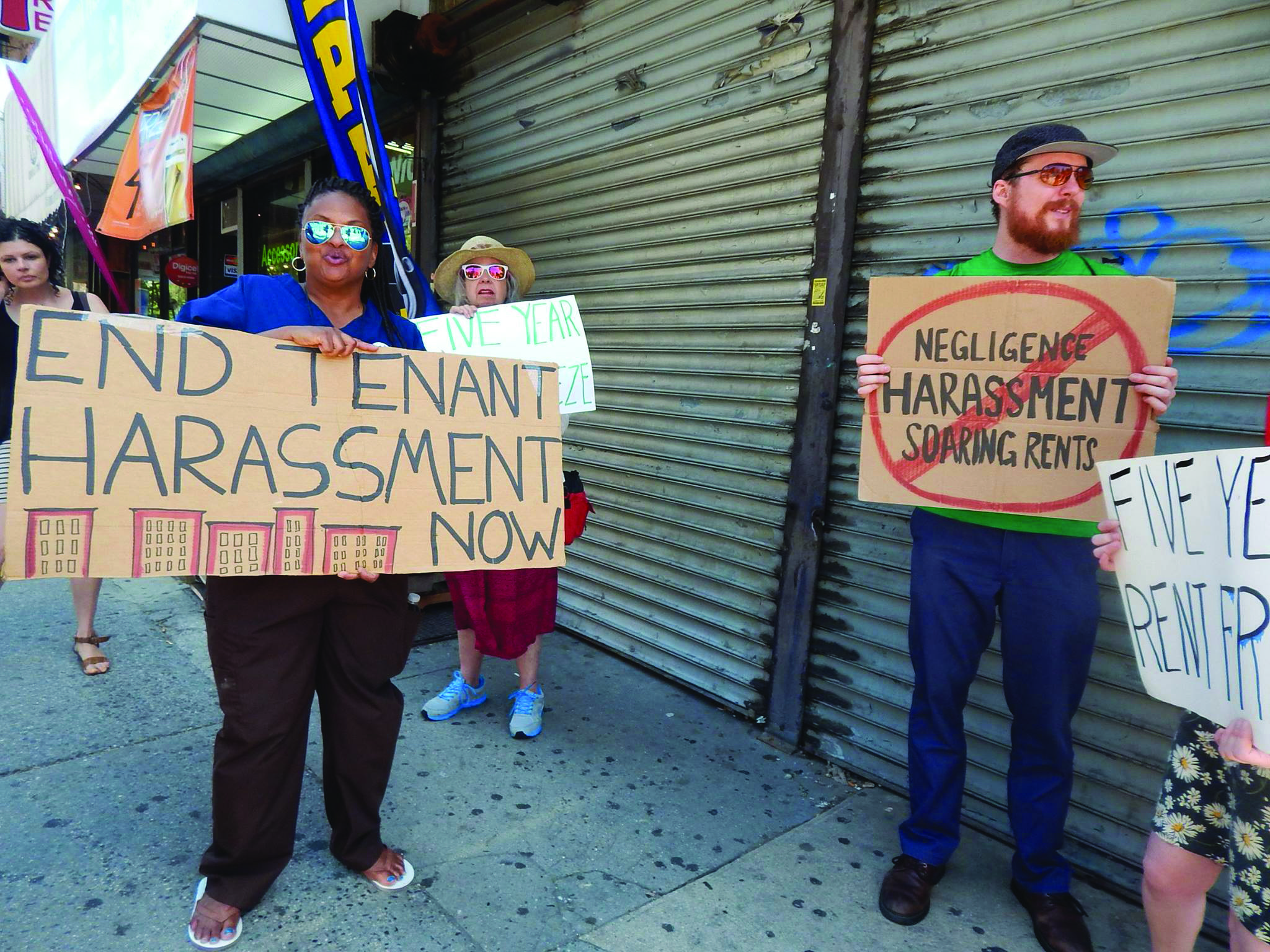When community workers describe our organizations, we often seek to distinguish our work from others’. One of the big divides is between service and organizing. “We don’t put Band-Aids on problems—we seek solutions!” says one side. “We don’t get caught up in politics; we support people with real needs in the here and now,” says the other.
In Community Projects as Social Activism: From Direct Action to Direct Services, Benjamin Shepard looks at service, organizing, and various hybrids thereof with an emphasis not on scale, but on whether the efforts build community in ways that are participatory and liberatory. Some of his examples are well known, but many are from important organizations, current and past, that are often left out of the canon.
Shepard also places great emphasis on joy as a way to both engage people and sustain them over the long haul, even in life-and-death contexts like the work of ACT-UP. Along with his broad framework, this focus (which sadly stands in contrast to day-to-day practice in too many groups) distinguishes this book from many other community practice texts.
Shepard lays out a flexible seven-stage model for a successful organizing campaign: identifying an issue, research, communication and messaging, mobilization, direct action, legal support, and sustainability strategies. Many of these will be familiar to experienced organizers.
But Shepard’s approach to these concepts may not be what readers expect. His discussion of issue research is not about assigning one person to pore over property records (important as that can be), but instead includes participatory action research, community assessment, and “militant ethnography.” I expected the legal strategies chapter, which follows one on direct action, to discuss protest observation and court support. But it focuses more on efforts to use the law as an organizing tool by holding government bodies to their obligations. One example is the work of Housing Works and the NYC AIDS Housing Network to keep the city accountable to its legal responsibility to provide emergency housing for people living with HIV/AIDS.
Shepard’s chapter on sustainability strategies particularly stands out. Titled “From Joy to Justice: Mixing Fun and Community Building,” it focuses on the power of art and play to focus collective energy and create welcoming organizational spaces. With stories from organizers, he illustrates the power of culture and subversive fun to break isolation and sustain hope and involvement. But there are also those who frown upon such approaches. Shepard quotes L. J. Wood, a Toronto organizer, who says there is “a fair amount of hostility to some forms of creative protest” because some see them as not serious enough for the issues involved. Many can tell similar stories; I remember being told sternly, during protests against the Bush inauguration in 2001, that my street theater group was distracting the people by making them laugh. Somehow, I think that we reached more people that day than the scolder did with his somber leaflets.
The latter half of Community Projects explores approaches that involve direct service and direct action, beginning with the survival and medical projects of the Black Panthers and Young Lords. Some of the most compelling sections deal with the struggle against the AIDS crisis. Shepard discusses ACT-UP, including its direct action strategies, the role of feminist and gay liberation movement veterans in shaping it, and its character as a social space that could hold both joy and mourning. He describes Housing Works’ approach to providing a crucial service while also organizing and advocating. And he discusses harm reduction efforts, particularly around syringe exchange, as vital services that have often been (and in many places remain) civilly disobedient in their very existence.
Considering the bureaucratizing and depoliticizing pressures of the nonprofit system, Shepard also looks to efforts that remain autonomous from restrictive funding sources. One example is Positive Force, which grew out of the Washington, D.C., punk scene of the mid-’80s and continues to enact radical politics through community-building services as straightforward but essential as grocery delivery to seniors. Shepard also discusses feminist and non-hierarchical organizational practices, ranging through time from the Mujeres Libres of revolutionary Spain to Ella Baker to Occupy Wall Street.
Throughout the book, as throughout community practice, questions emerge that can be springboards for further discussion. How does an organization keep members engaged, even around arcane legal proceedings? How can an organization best “pursue the services that are on the books and also change the books,” as Frances Fox Piven eloquently puts it, without shifting its focus to only one of those two goals? In engaging art and culture, how should organizers best navigate cultural differences between and within cultures, when, for instance, music that moves one group leaves another cold? Shepard does not provide pat answers to such questions, but readers will find much to ponder as they carry the conversations and practice into future chapters of their own work.






Comments